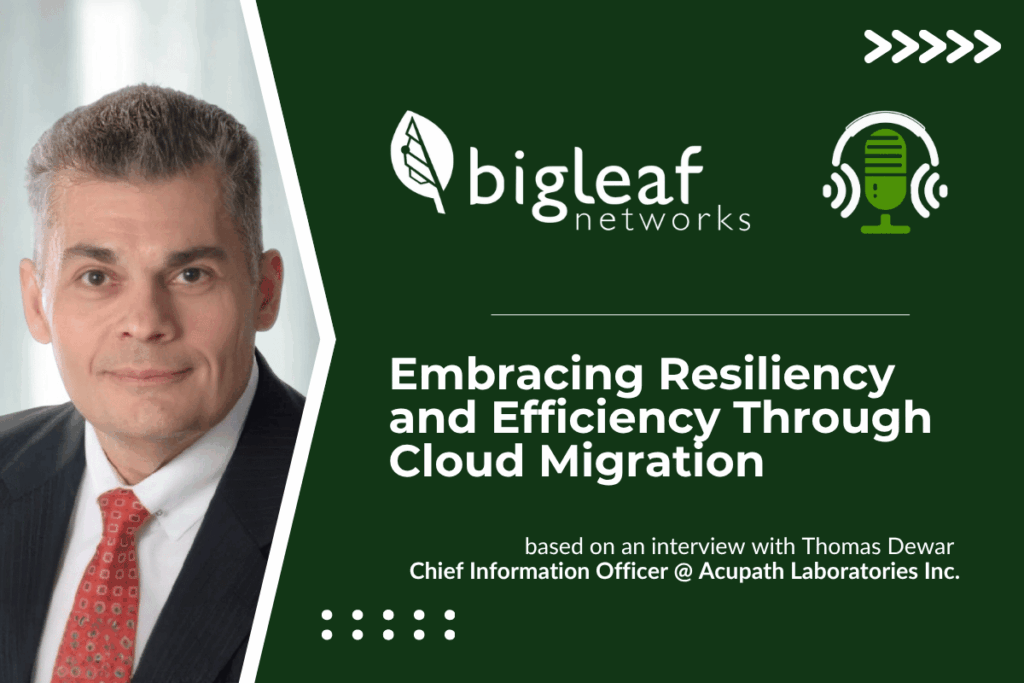For Thomas Dewar, resilience isn’t about bouncing back—it’s about never going down. When he moved Acupath Laboratories’ systems to Azure, his goal was not modernization for its own sake but protection against failure. His approach to cloud migration resiliency and efficiency centers on preparation, documentation, and empathy for the teams who depend on uninterrupted systems.
From Crisis to Continuity
After witnessing major disruptions—from 9/11 to the COVID-19 shutdowns—Dewar saw how physical infrastructure limited response. Cloud migration removed those bottlenecks and kept operations running securely from any location.
“Cloud migration wasn’t about chasing trends—it was about ensuring operations could continue from anywhere.” This philosophy underpins every decision: stability first, innovation second.
Incremental Change, Lasting Impact
Dewar advises CIOs to migrate in phases. Pilot critical applications, train users, and document redundancy plans before full deployment. This measured approach creates confidence and avoids downtime. By framing cloud migration resiliency and efficiency as a process rather than a project, he ensures that adoption is smoother and more sustainable.
Efficiency as a Result of Resilience
Once redundancy was in place, Acupath found its teams more productive. System monitoring became simpler, updates faster, and cost control easier. The real efficiency, Dewar says, is peace of mind—knowing critical apps will stay online regardless of circumstances. That sense of stability ripples through operations, boosting employee confidence and patient trust alike.
Learn more: Building Enterprise WAN Resilience with 5G
Building Resilience as a Culture
For Dewar, technology and teamwork are inseparable. He urges leaders to make resilience a cultural habit—reviewing redundancy plans, testing failovers, and sharing lessons openly so everyone understands how to respond when systems are stressed. Cloud architecture may enable resiliency, but it’s the people behind it who sustain efficiency over time.
Takeaways
- Build redundancy first, speed second.
- Train teams before cut-over.
- Document every dependency.
- Monitor continuously to learn and adapt.
- Treat cloud migration as a strategy, not a project.
By approaching migration as a long-term commitment to resilience, Dewar demonstrates how healthcare organizations can turn infrastructure into an asset instead of a risk. Each phase of Acupath’s journey—from planning around real-world disruption to measuring efficiency gains after deployment—proves that careful execution pays dividends. Teaching teams to own resilience builds confidence and ensures that efficiency isn’t a one-time win but a continuous outcome of smart design. Ultimately, cloud migration resiliency and efficiency isn’t about technology alone—it’s about planning for people, processes, and continuity that never skip a beat.
Related Content
- What Is the Data and Information Strategy for Cloud-Based Applications Today?
- Building Healthcare AI Through Robust Data Foundations
- Embracing Resiliency and Efficiency Through Cloud Migration
- Future-Proofing: The CIO’s Guide to Succession and Sustainability
- Go Beyond the Connection on Captivate
- Subscribe to the LinkedIn Newsletter
- YouTube Podcast Playlist
